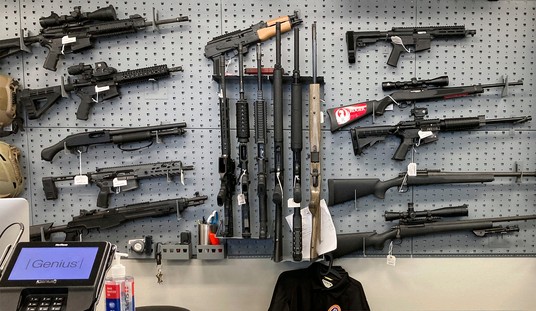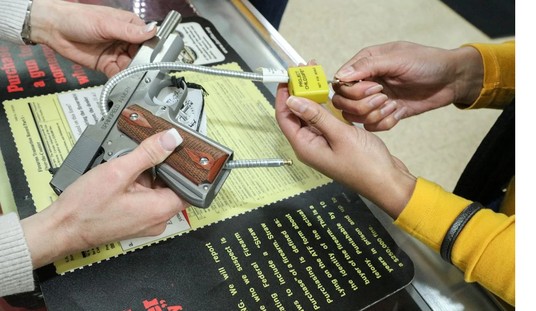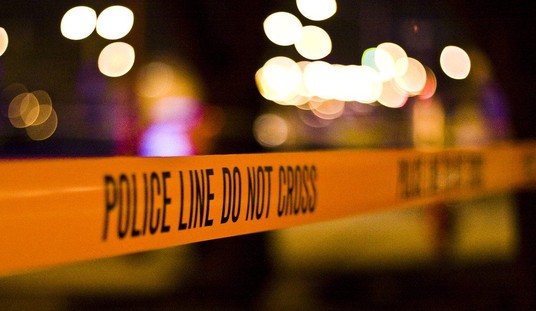
Oh, how I tire of the caliber wars!
When I first started reading and posting on early message boards in the late 1980s (yes, there was an Internet before the World Wide Web), shooters were debating “the best” handgun calibers. If my memory serves me correctly, the debate then was over .380 ACP, .38 Special, 9mm, .45 ACP, and .357 Magnum. Following the “bigger is better” school of thought, I bought a military surplus 1911 clone (a Sistema 1927).
I held on to that .45 ACP Sistema and the then-new 230-grain Federal Hydra-Shok hollowpoint for many years as new calibers to add to the mix. The 10mm, .40 S&W, and .357 SIG came into existence and were touted as the “next big thing.” All three cartridges have their merits and their fans, including many law enforcement adopters. It was completely subjective, but I never took to any of them.
It wasn’t until 2004 that I finally traded in the 77-year-old Argentine Colt for my first “modern” pistol, a Springfield Armory XD in 9mm. The last decade with the “euro-pellet” (as some have called it) has been an informative one, and unless something radically changes in the decades ahead, I suspect I’ll be shooting and carrying 9mm pistols for many years to come, despite the “advantages” of other pistols.
Here’s why.

Capacity
One advantage of the 9mm compared to other defensive semi-auto pistol calibers is that in a given platform, it holds more cartridges than it’s competitors. When I selected the XD as my replacement for the 1927, I was drawn to the 16-round capacity of the pistol. If I carried with a round in the chamber and a spare magazine, I had 33 ready rounds at my disposal, which was more than enough for any adverse social situation I could reasonably expect to encounter this side of the zombie apocalypse. The same-sized pistol in .40 S&W or .357 SIG had twelve-round magazines, dropping my two mag/loaded chamber carry count from 33 rounds down to 25 rounds. I preferred having more… especially considering the after-action horror stories I’d read of police officers shooting their guns dry against especially determined or drugged-up attackers.
[continues on next page]
Concealability
I kept that XD for a number of years and through a number of classes. I was moderately competent with it, and shot it well against the immobile paper adversaries that I typically encountered when I carried it… which sadly, was at the range. I’d also strap it on in the short Carolina winters when I could conceal it under a coat or at least a sweatshirt. When tee shirt season rolled around, the XD became a safe queen. I rationalized that it was too hard to conceal, and that it wasn’t likely that I’d ever encounter a problem needing a handgun anyway.
I finally became honest with myself several years ago, and decided that a great range gun sitting in the safe wasn’t going to do me much good at a gas station fuel pump, ATM, or grocery store parking lot where I was more statistically likely to face a threat.
After a great deal of personal anguish and a lot of research, I traded in the XD for another 9mm, a Kahr CM9. My earlier fears of not having enough ammunition were tempered by the reality that most self-defense shootings involving concealed carriers result in just a handful of shots being fired, or even fewer. What I really needed was a small pistol that I would actually carry regularly. The used CM9 at my local gun shop was in great shape and at a good price, and offered a still reasonable 6+1 capacity. It simply made sense to me. It worked well for my tee shirt and flip-flops attire in either the Galco Stow-N-Go that has become it’s most frequent home (I have a review on that holster pending) or the Desantis The Nemisis pocket holster. The “pocket nine” gave me a common caliber to share with my range and Very Bad Things handguns, in a much smaller package that I would actually carry on a daily basis.

Controllability
Most 9mm cartridges have a relatively quick and soft recoil when compared to other defensive handgun calibers, with reduced muzzle flip. Shooters can typically recover and fire more accurate followup shots in a more timely manner with a 9mm than with harder, harsher, and longer recoiling calibers.
Performance
Once upon a time, I was sold upon the “bigger is better” theory of handgun bullets. I even—for a very short time—bought the line of gun store commandos and Internet warriors of “one-shot stoppers,” the claimed vast superiority of one caliber over another, etc. But the reality of that argument was and is complete and utter crap.
It always has been. In the real world, where physics, psychology, and biology matter, “handgun stopping power” has always been a myth.
Whether firearms use comparable full metal jacket (FMJ) or hollowpoint bullets, it is location, location, location that matters. A .45-diameter bullet through a vital organ or into the central nervous system simply isn’t much more effective than a .40-diameter bullet or a .35-diameter bullet at handgun velocities. The hundredths of an inch in diameter difference were largely irrelevant. A human shot through the heart lungs, and other vital organs with a .45 ACP, 10mm or other vaunted “manstopper” can still live for minutes and continue fighting as long as he has the will to do so. A 9mm or .40 S&W bullet placed in the same location is going to be just as effective as a practical matter, all uninformed argument to the contrary. The only ways handgun bullets are “one shot stoppers” are:
- a central nervous system strike to the brain or spine. If you short-circuit the body’s electrical system, the body collapses. All typical defensive handgun calibers can penetrate to sufficient depths.
- a structural hit. Shots that shatter a leg or pelvis are relatively rare with handgun bullets, but in the event they do happen, the body collapses.
- a psychological stop. The vast majority of defensive handgun uses where shots are fired result in non-fatal wounds. Attackers stop fighting because they either psychologically shut down as a result of a wound—acting like they think they should respond to being shot—or simply stop fighting and/or begin to flee because they don’t want to be shot again.
The most common defensive calibers, using quality defensive ammunition, perform in remarkably similar ways. Many law enforcement agencies are viewing the same data, and as a result of the data, are shifting back to 9mm pistols from the .40 S&W and .357 SIG pistols they’d adopted decades before.
[continues on next page]

Price
9mm cartridges are extremely common, and also use less material (primer charge, brass, powder, lead, guilding metal, etc) than other calibers. As a result, they are typically several dollars per box cheaper to shoot than other calibers, and far cheaper per case, both if you handload or buy commercial ammunition. At the time of this article, I can purchase a 1,000-round case of 115-grain 9mm TMJ Speer Lawman from LuckyGunner.com for $290. A 1,000-round case of .45 ACP from the same manufacturer on the same site costs $425. That’s a $135 price difference to fire a thousand rounds.
There is also a vast selection of 9mm pistol designs on the market, keeping prices competitive in nearly every niche.

Conclusion
I don’t have an emotional investment in any particular defensive handgun caliber.
I have roughly equal amounts of experience with the .45 ACP and 9mm, and an appreciable amount of rounds through .40 S&W pistols as well. I’m also familiar with the 10mm and .357 SIG, but haven’t spend a great deal of time with them due to their high cost and relative scarcity compared to the previous three calibers.
In the end, I’ve chosen the 9mm as my personal standard cartridge for the reasons listed above. I can get smaller guns in 9mm than in other significant pistol calibers, and in similar full-sized firearms, I typically have a higher magazine capacity in 9mm than in .40 S&W or .45 ACP (I feel quite sorry for those of you in less-free, capacity-limited states). I find that I get back on target faster with a 9mm, and that it is more affordable, so I can shoot it more often, while data suggest that the cartridge is similarly potent (or arguably impotent) when premium defensive ammunition is compared across the major calibers.
No pistol cartridge is going to be perfect or even arguably good, because pistols themselves are an inferior compromise to carrying a far more effective and less socially acceptable rifles. That allowed, the 9mm does everything you can expect in a defensive pistol adequately, affordably, with more platform options than in any other caliber.
Until a better compromise comes along, I’ll stick to 9mm because it is simply “good enough” in multiple areas








Join the conversation as a VIP Member